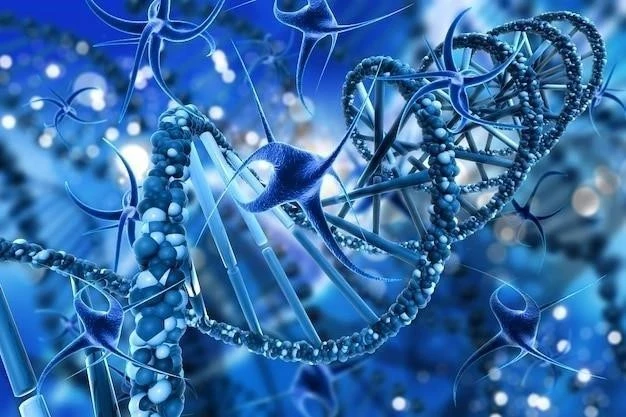
Tamoxifen Mechanism of Action⁚ An Overview
Tamoxifen’s primary action involves competitively inhibiting estradiol binding to estrogen receptors. This interaction significantly impacts breast cancer cell growth and proliferation, forming the basis of its therapeutic effect.
Competitive Inhibition of Estradiol Binding
Tamoxifen’s mechanism of action centers around its competitive antagonism of estradiol. Estradiol, a key female sex hormone, binds to estrogen receptors (ERs) within breast cancer cells, stimulating their growth and proliferation. Tamoxifen, structurally similar to estradiol, competes for these same ER binding sites. By occupying the receptor, tamoxifen prevents estradiol from binding, effectively blocking its growth-promoting signals. This competitive inhibition is crucial to tamoxifen’s efficacy in treating ER-positive breast cancers. The strength of this competition, and therefore the therapeutic outcome, can vary depending on the relative concentrations of estradiol and tamoxifen, as well as individual patient factors and receptor subtypes; This competitive binding is a fundamental aspect of tamoxifen’s anti-estrogenic effects within breast tissue.
Role in Breast Cancer Treatment
Tamoxifen’s primary clinical application lies in its ability to effectively manage and treat estrogen receptor-positive (ER+) breast cancer. By competitively inhibiting estradiol binding to ERs, tamoxifen disrupts the signaling pathways that drive the growth and proliferation of these cancer cells. This anti-estrogenic effect translates into significant clinical benefits, including reduced tumor size, slowed disease progression, and improved patient survival rates. Tamoxifen is frequently used as an adjuvant therapy following surgery or radiation, further reducing the risk of recurrence. Its use extends to the treatment of advanced ER+ breast cancer and even as a preventative measure in high-risk individuals. The precise mechanisms underlying its effectiveness in various stages and contexts of breast cancer continue to be investigated, but the core principle of ER antagonism remains central to its therapeutic success.
Estrogen Receptor Modulation (SERM)
Tamoxifen’s classification as a selective estrogen receptor modulator (SERM) highlights its unique ability to exert both agonist and antagonist effects depending on the tissue type. While it acts as an antagonist in breast tissue, blocking estrogen’s growth-stimulating effects on breast cancer cells, its actions differ in other parts of the body. In some tissues, like bone, tamoxifen can mimic estrogen’s effects, acting as an agonist and potentially contributing to beneficial effects such as maintaining bone mineral density. This tissue-specific modulation is a key characteristic distinguishing SERMs from other anti-estrogens. The precise molecular mechanisms underpinning these tissue-specific actions are still being fully elucidated, but they likely involve interactions with co-regulators and other factors that modify the estrogen receptor’s activity in a context-dependent manner. This dual activity is a crucial factor in both the therapeutic benefits and potential side effects of tamoxifen.
Tamoxifen’s Dual Actions⁚ Agonist and Antagonist Effects
Tamoxifen exhibits tissue-specific effects; acting as an antagonist in breast tissue, but an agonist in other tissues like bone, impacting its therapeutic profile and side-effect profile.
Agonistic Effects in Certain Tissues
While primarily known for its anti-estrogenic effects in breast tissue, tamoxifen surprisingly acts as an estrogen agonist in certain other tissues. This dual nature is a hallmark of its classification as a selective estrogen receptor modulator (SERM). In bone tissue, for instance, tamoxifen’s agonistic activity helps maintain bone mineral density, a crucial benefit for postmenopausal women who are at increased risk of osteoporosis. This effect is mediated through its interaction with estrogen receptors in bone cells, stimulating bone formation and reducing bone resorption. However, this agonistic action in bone can also contribute to side effects such as endometrial thickening and increased risk of endometrial cancer. Understanding these tissue-specific agonist effects is vital for balancing the therapeutic benefits of tamoxifen against its potential adverse effects. The precise mechanisms determining the tissue-specific agonistic actions remain a subject of ongoing research.
Antagonistic Effects in Breast Tissue
In breast tissue, tamoxifen’s primary mechanism is its antagonistic action against estrogen. This is the key to its effectiveness in treating estrogen receptor-positive (ER+) breast cancers. Tamoxifen competitively binds to estrogen receptors, preventing the binding of estradiol, a hormone crucial for the growth and proliferation of ER+ breast cancer cells. By blocking estradiol’s action, tamoxifen effectively inhibits the signaling pathways that drive tumor growth. This antagonistic effect translates to a reduction in tumor size, slowed disease progression, and improved patient outcomes. The strength of this antagonism can vary, and factors like the concentration of estradiol and the specific estrogen receptor subtypes involved play a role. This targeted antagonism against estrogen in breast tissue is a cornerstone of tamoxifen’s therapeutic value in breast cancer treatment.
Tissue-Specific Responses and Co-regulators
Tamoxifen’s dual agonist/antagonist activity highlights the complexity of its interactions within different tissues. The observed tissue-specific responses aren’t solely determined by the binding of tamoxifen to estrogen receptors (ERs), but also by the presence and activity of various co-regulators. These co-regulators, proteins that modulate the function of ERs, interact with the tamoxifen-ER complex, influencing the downstream effects on gene expression. In breast tissue, certain co-regulators might promote tamoxifen’s antagonistic effects, while in other tissues like bone, different co-regulators may favor its agonistic activity. These intricate interactions contribute to the diverse effects seen in different parts of the body. The specific repertoire of co-regulators present in each tissue type thus plays a critical role in determining whether tamoxifen acts as an agonist or an antagonist, emphasizing the complexity of its mechanism of action. Further research into these co-regulators holds promise for enhancing tamoxifen’s efficacy and reducing adverse effects.

Metabolic Activation and DNA Binding
Tamoxifen itself is inactive; its active metabolite, 4-hydroxytamoxifen, binds to DNA, influencing gene expression and contributing to its therapeutic and adverse effects.
Role of 4-Hydroxytamoxifen
Tamoxifen, in its original form, is a prodrug—meaning it requires metabolic activation to exert its therapeutic effects. This activation primarily occurs in the liver through the cytochrome P450 enzyme system, converting tamoxifen into its active metabolite, 4-hydroxytamoxifen (4-OHT). 4-OHT is significantly more potent than tamoxifen in binding to estrogen receptors and influencing gene expression. It is this active metabolite that is primarily responsible for the anti-estrogenic effects observed in breast tissue and the agonistic effects seen in other tissues. Individual variations in the activity of liver enzymes responsible for this conversion can influence the efficacy and side-effect profile of tamoxifen. Understanding the role of 4-OHT is crucial for optimizing tamoxifen’s therapeutic use and predicting individual patient responses. The pharmacokinetic aspects of this conversion are important considerations in tailoring treatment.
Impact on Estrogen Levels
Tamoxifen’s influence on estrogen levels is complex and tissue-dependent. While it blocks estrogen’s action in breast tissue by competing for receptor binding, its impact on overall circulating estrogen levels is less straightforward. In some cases, tamoxifen can lead to a slight reduction in circulating estradiol levels, primarily through its effects on sex hormone-binding globulin (SHBG). SHBG binds to and inactivates estradiol, and tamoxifen can increase SHBG levels, indirectly lowering free estradiol. However, the impact on overall estrogen levels is often minimal and variable among individuals. Moreover, its active metabolite, 4-hydroxytamoxifen, can have a more complex relationship with estrogen levels, potentially even leading to increases in certain situations. The net effect on estrogen levels is therefore not a simple reduction but a multifaceted interplay influenced by metabolic pathways and tissue-specific actions.
Clinical Implications and Efficacy
Tamoxifen’s mechanism translates to significant clinical benefits in treating and preventing breast cancer, particularly in hormone-receptor-positive cases, impacting treatment strategies and patient outcomes.
Adjuvant Therapy for Breast Cancer
A major clinical application of tamoxifen is as adjuvant therapy following primary treatment for breast cancer, such as surgery or radiation. In this setting, tamoxifen’s ability to inhibit estrogen’s actions on remaining cancer cells helps prevent recurrence. By targeting the estrogen receptors, tamoxifen reduces the risk of cancer cells regrowing and spreading. This adjuvant use is particularly effective in patients with estrogen receptor-positive (ER+) breast cancer, where estrogen plays a crucial role in tumor growth. The duration of adjuvant tamoxifen therapy is typically several years, and its effectiveness has been demonstrated in numerous clinical trials, leading to improved disease-free survival and overall survival rates for many patients. The precise duration and optimal timing of adjuvant therapy remain areas of ongoing research and are tailored to individual patient factors and risk profiles.
Prevention of Breast Cancer in High-Risk Individuals
Beyond its established role in treating existing breast cancer, tamoxifen also demonstrates efficacy in preventing the disease in high-risk individuals. For women with a significantly increased risk of developing breast cancer due to genetic predisposition, family history, or other factors, tamoxifen can be used as a chemopreventive agent. By blocking the stimulatory effects of estrogen on breast cells, tamoxifen reduces the likelihood of cancerous transformations. This preventative use relies on the same fundamental mechanism of estrogen receptor antagonism that underlies its therapeutic application in treating existing cancers. However, the decision to utilize tamoxifen for chemoprevention involves careful consideration of the individual’s risk factors and the potential side effects associated with long-term tamoxifen use. The benefit-risk ratio is carefully weighed to determine the appropriateness of preventative therapy in each case.
Treatment of Hormone-Responsive Male Breast Cancer
While less common than in women, breast cancer also affects men, and tamoxifen plays a significant role in treating hormone-responsive forms of the disease. The underlying mechanism of action remains the same⁚ tamoxifen’s antagonism of estrogen receptors. In men, as in women, many breast cancers depend on estrogen for growth and proliferation. Therefore, tamoxifen’s ability to block estrogen’s effects is therapeutically relevant in this population. Tamoxifen is frequently employed as a first-line therapy or adjuvant therapy for hormone-responsive male breast cancer, depending on the stage and characteristics of the disease. The efficacy and side effect profile in men are generally comparable to those observed in women, although further research is needed to optimize treatment strategies specifically for male patients. The successful application of tamoxifen underscores the universality of its core mechanism of action across genders.

Adverse Effects and Patient Compliance
Tamoxifen’s dual actions and metabolic effects can lead to various side effects, impacting patient adherence to the prescribed treatment regimen and long-term outcomes.
Endometrial Thickening and Cancer Risk
One of the notable adverse effects associated with tamoxifen is endometrial thickening. This occurs due to tamoxifen’s agonistic activity in the endometrium, the lining of the uterus. The stimulation of endometrial cells by tamoxifen can lead to an increased risk of endometrial hyperplasia, a condition where the endometrial lining thickens excessively. In some cases, this hyperplasia can progress to endometrial cancer. The risk of endometrial cancer is generally low but notably higher in patients taking tamoxifen compared to those who are not. Regular monitoring through ultrasound or endometrial biopsies is often recommended to detect and manage endometrial thickening. The increased risk highlights the importance of carefully weighing the benefits of tamoxifen against its potential risks, particularly in considering the individual patient’s overall health and risk factors. Risk reduction strategies and careful monitoring are crucial aspects of managing this potential side effect.
Metabolic Syndrome and NAFLD
Emerging evidence suggests a link between tamoxifen use and an increased risk of metabolic syndrome and non-alcoholic fatty liver disease (NAFLD). The mechanisms underlying this association are not fully understood but may involve tamoxifen’s influence on lipid metabolism and insulin sensitivity. Tamoxifen has been shown to affect lipid profiles, potentially leading to dyslipidemia, a characteristic feature of metabolic syndrome. Additionally, some studies suggest that tamoxifen might promote de novo lipogenesis (fatty acid synthesis) in the liver, contributing to NAFLD development. The increased risk appears to be more pronounced in individuals with pre-existing risk factors for metabolic syndrome. Regular monitoring of lipid profiles, liver function, and other metabolic parameters is often recommended for patients on tamoxifen, particularly those with pre-existing metabolic conditions. Further research is necessary to fully elucidate the mechanisms involved and develop strategies for mitigating these metabolic side effects.
Importance of Patient Monitoring and Adherence
Given the potential for both therapeutic benefits and adverse effects, close monitoring of patients receiving tamoxifen is crucial. Regular check-ups allow for early detection of any side effects, enabling timely intervention and management. This monitoring often includes assessments of liver function, lipid profiles, and endometrial health. Furthermore, maintaining patient adherence to the prescribed treatment regimen is paramount for maximizing therapeutic efficacy and minimizing risks. Factors influencing compliance include the frequency and severity of side effects, patient understanding of the treatment goals, and the quality of the doctor-patient relationship. Strategies to improve adherence may involve addressing side effects proactively, providing clear and consistent education, and establishing strong communication channels between patients and their healthcare providers. Consistent monitoring and proactive management of potential side effects are essential for optimizing the benefits and minimizing the risks associated with tamoxifen therapy.
Tamoxifen Resistance Mechanisms
Despite initial effectiveness, some breast cancers develop resistance to tamoxifen, necessitating a deeper understanding of the underlying mechanisms and strategies to overcome resistance.
Role of IGF-1R and PAK2
The development of tamoxifen resistance in breast cancer is a complex process involving multiple pathways. Research highlights the significant roles of the insulin-like growth factor 1 receptor (IGF-1R) and p21-activated kinase 2 (PAK2) in mediating this resistance. IGF-1R signaling promotes cell growth and survival, even in the presence of tamoxifen. Overactivation of IGF-1R can circumvent tamoxifen’s inhibitory effects on estrogen receptor signaling. Furthermore, PAK2, a serine/threonine kinase, is implicated in promoting tamoxifen resistance through various mechanisms, including its influence on cell cycle progression and apoptosis. Studies suggest a potential link between IGF-1R and PAK2, with IGF-1R activation potentially leading to increased PAK2 expression. Targeting these pathways, either individually or in combination, represents a promising strategy for overcoming tamoxifen resistance and improving treatment outcomes in patients who develop resistance.
Overcoming Resistance Strategies
The emergence of tamoxifen resistance necessitates the development of strategies to overcome this challenge and restore therapeutic efficacy. Several approaches are currently being explored. One strategy focuses on targeting the pathways implicated in resistance, such as IGF-1R and PAK2. Inhibitors of these pathways are under investigation as potential agents to enhance tamoxifen’s effectiveness or provide alternative treatment options. Another approach involves combining tamoxifen with other drugs that act through different mechanisms. This combination therapy aims to disrupt multiple signaling pathways, making it more difficult for cancer cells to develop resistance. Furthermore, exploring alternative anti-estrogens or developing strategies to modulate the expression of co-regulators that influence tamoxifen’s activity are additional avenues being actively pursued. Ultimately, a multi-pronged approach that combines targeted therapy with innovative drug combinations holds the greatest promise for overcoming tamoxifen resistance and improving patient outcomes.
Future Research Directions
Ongoing research aims to refine our understanding of tamoxifen’s complex actions, optimize its use, and develop strategies to overcome resistance, improving patient care.
Novel Mechanisms of Action of Endoxifen
Endoxifen, a major metabolite of tamoxifen, warrants further investigation into its unique properties and potential mechanisms of action. While sharing similarities with tamoxifen in terms of estrogen receptor binding, endoxifen may possess distinct activities that contribute to its therapeutic effects. Research suggests that endoxifen might exhibit novel mechanisms beyond simple competitive inhibition of estrogen receptors. These could involve interactions with other signaling pathways or effects on cellular processes not directly related to estrogen receptor modulation. Exploring these novel mechanisms could lead to the development of more effective therapies or a better understanding of tamoxifen’s overall efficacy. A deeper understanding of endoxifen’s actions could also help in personalizing treatment strategies based on individual patient responses and metabolic profiles. Further research focusing on endoxifen’s unique properties is crucial to fully harness its therapeutic potential.
Personalized Medicine Approaches
The variability in individual responses to tamoxifen highlights the need for personalized medicine approaches. Factors such as genetic polymorphisms affecting drug metabolism, estrogen receptor subtypes, and the presence of co-regulators can significantly influence both therapeutic efficacy and the risk of side effects. Pharmacogenomic testing, which analyzes an individual’s genetic makeup to predict drug response, holds promise for tailoring tamoxifen therapy. By identifying patients likely to benefit most from tamoxifen and those at higher risk of adverse events, personalized medicine can optimize treatment strategies. Furthermore, incorporating biomarkers that predict the development of tamoxifen resistance could enable early intervention and switching to alternative therapies before resistance fully develops. Integrating these personalized approaches into clinical practice could significantly improve patient outcomes and reduce the occurrence of adverse events associated with tamoxifen therapy.

